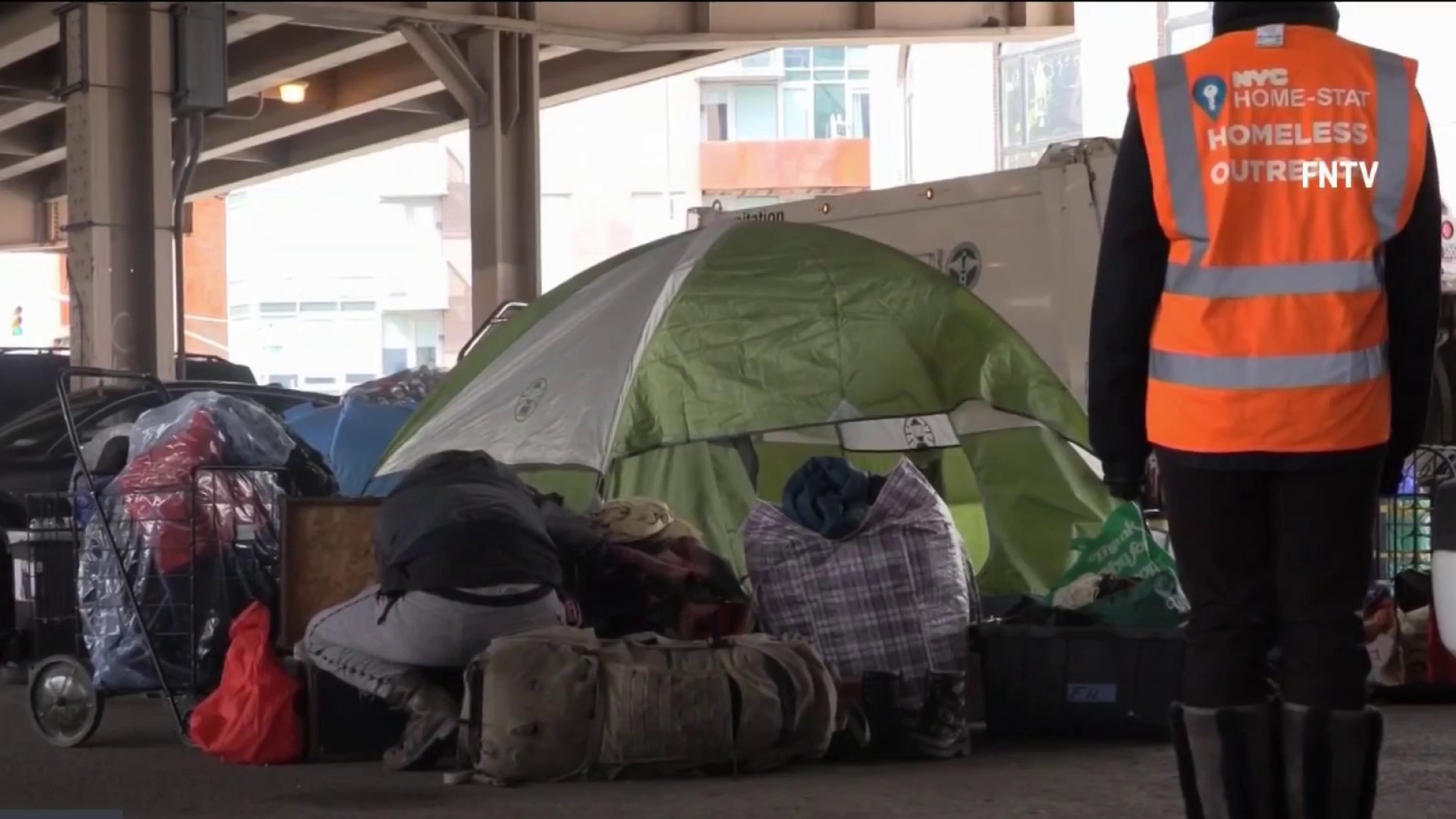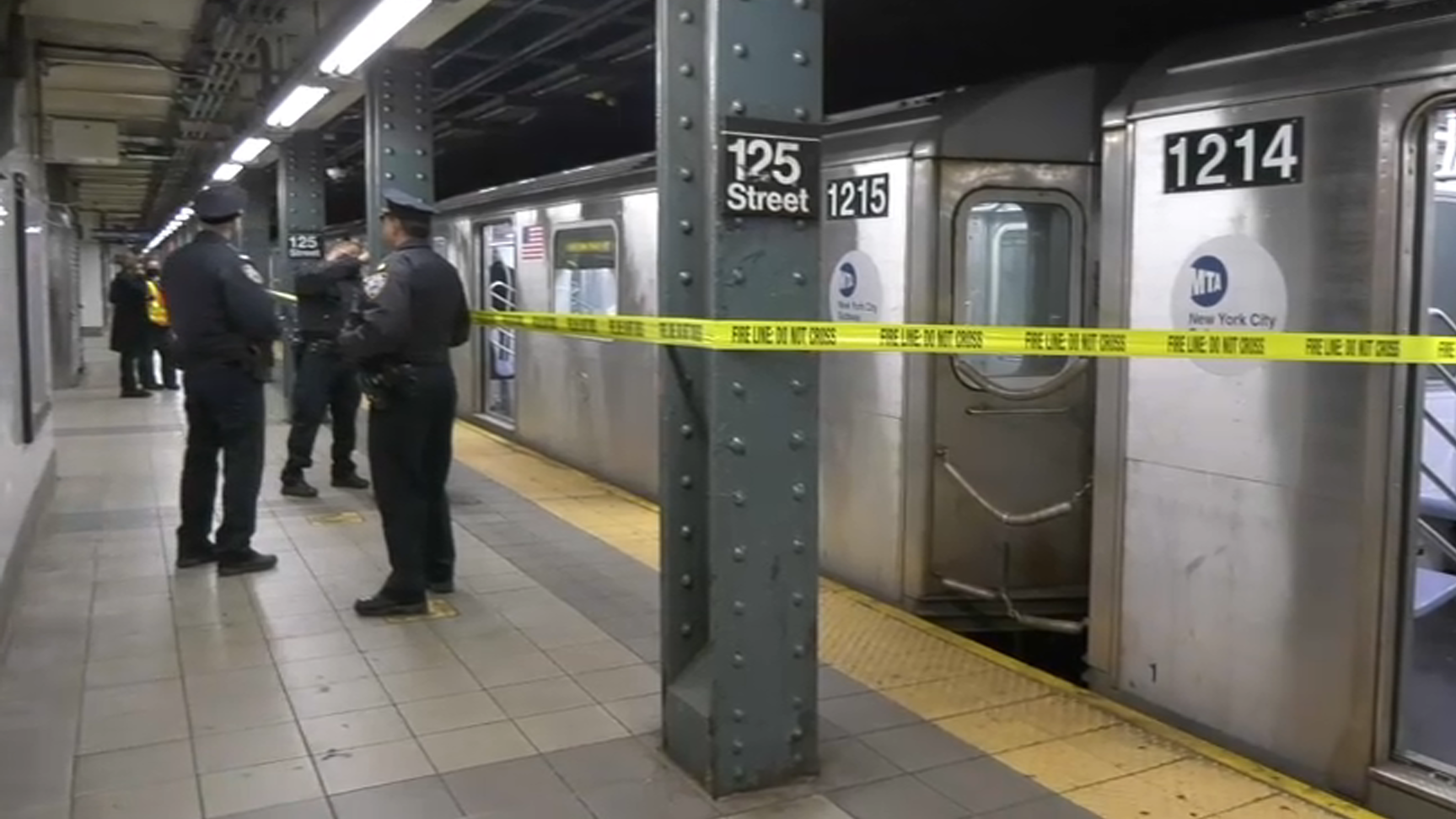What to Know
- Mayor Eric Adams is sharing new details Wednesday on his administration's plan to remove homeless encampments and help people living in them into shelters or more sustainable housing
- The renewed push to engage with and offer services to homeless people camped out on city streets comes amid an already underway effort to help them out of its sprawling subway system
- In its most recent estimate, NYC said about 1,100 people were living in parks and on the streets — which advocates say is an undercount. Most of the city's roughly 50,000 homeless people stay in shelters
Mayor Eric Adams revealed more details on his homeless plan Wednesday, including efforts to remove encampments from New York City streets and highway underpasses, among other places.
The Democrat's initiative, first disclosed late last week with few additional details, mirrors similar overhauls in other liberal metropolises that had previously tolerated the encampments.
According to Adams, he's pleased with the results of the encampment sweep, saying that the city identified 240 encampments and clearing 239, with crews going back everyday to see if these locations are still cleared.
Get Tri-state area news and weather forecasts to your inbox. Sign up for NBC New York newsletters.
"As a mayor of all of us, including my homeless brothers and sisters, I am not leaving any New Yorkers behind. We're moving together and that is the goal of what we must accomplish," Adams said during a press conference detailing the city's plans. "I'm not abandoning anyone. I am not believing that dignity is living in a cardboard without a shower, without a toilet...in terrible living conditions...This city is now engaged in a multi-agency mission with compassion and caring, taking our time, not rushing through this, but being compassionate to people who are experiencing terrible circumstances."
The renewed push to engage with and offer services to homeless people camped out on city streets comes amid an already underway effort to help them out of its sprawling subway system, which has been plagued by crime and aggressive behavior over the last few months. That's not just limited to the homeless, though.
That said, Adams argues the current situation involving street homelessness is untenable and that as a society we have grown accustomed to seeing these encampments and accepted it as a way of life -- something he called "unacceptable" and "dysfunctional."
"We are going to have a city that is far better than the dysfunctional city that we've had for far too long," he said.
“We’re going to rid the encampments off our street and we’re going to place people in healthy living conditions with wraparound services,” he told the New York Times. "I’m telling my city agencies to do an analysis block by block, district by district, identify where the encampments are, then execute a plan to give services to the people who are in the encampments, then to dismantle those encampments.”
Adams said people living in these encampments are offered services, including information on "safe haven sites" with dozens of beds.
On Tuesday the city announced that 350 of the 500 hundred beds the city committed as "safe haven" and "stabilization" beds have opened to serve New Yorkers. However, the city will continuously work to ensure that anyone who needs a bed will receive a bed through traditional homeless shelters or through the safe haven and stabilization beds, according to the mayor.
"We will continue to evaluate the need," he said, adding that some people will go back to live with their families or receive the health services they needs, including mental health or drug rehabilitation, that will move them into the next phase of being helped in obtaining permanent housing.
However, Adams said he believes there will still be individuals who will choose to live on the streets despite being presented with the help and services they need.
The city's outreach will also include handing out brochures to those experiencing homelessness which will provide them with information, a look at what the city's shelters look like, and how they can obtain help. According to the mayor, in the next few weeks there will be an announcement of a grassroots effort involving volunteers that will help out the city in going out and engaging those experiencing homelessness.
“We can’t stop an individual from sleeping on the street based on law, and we’re not going to violate that law,” he previously said. "But you can’t build a miniature house made out of cardboard on the streets. That’s inhumane."
In its most recent estimate in January 2021, the city said about 1,100 people were living in parks and on the streets — a number seen by many advocates as an undercount. Most of the roughly 50,000 homeless people in the city stay in shelters.
On Wednesday, Adams further elaborated, saying that the city will remain respectful to those experiencing homelessness, but also acknowledged no one can force people to homeless shelters.
"We don't have the right to tell people they can't live on the streets, laws don't allow us to do that. that's why we are calling for a stronger Kendra's Law to give people help that need help. Albany must make that decision, but we are not going to have a city where people are living like this," he said.
Kendra's Law is a state law that addresses involuntary outpatient commitment also known as assisted outpatient treatment.
As a way of keeping up-to-date on the situation, Adams says he continuously receives daily reports to analyze where the shelters are located and the places that need more assistance, adding that the city also receives daily reports on homelessness encampments and immediately respond to the locations.
The mayor said in one encampment that the city shut down, they found 500 hypodermic needles.
"Look at these conditions that a fellow New Yorker was living in. And I am supposed to allow this to stay? I'm supposed to ask like I don't see this? This is dignity?" he said while showing a photo of a former encampment that the city closed that was littered with hypodermic needles.
The city will also continue to provide shower bus services as a means of continuing to build the trust within the community - a process, he said, will take time.
"No person -- no matter the circumstances -- should have to live on the streets," NYPD Commissioner Keechant Sewell said. "Homelessness has its root causes but our response must be clear: when we see a problem we must do everything we can to fix it. We must ensure that our public spaces are safe, that they are accessible to all, and everyone in need of a suitable place to stay has access to one.
"We are focused on improving the quality of life of all of the people we serve, especially our city's most vulnerable population."
Sewell described the plan as a "multi-faceted, holistic approach focusing on social services, health and public safety."
The mayor said the outreach multi-agency team has been working to get those experiencing homelessness the help and referrals they need.
Adams has made a point of addressing the high number of individuals experiencing homelessness in the city practically since the start of his administration. He said that hundreds of people have already accepted services or have gone back to their families since the launch of the subway safety initiative last month -- a plan that no longer allows people to shelter in the subway system as a means to curtail the recent spike in subway stabbings and violence. He notes, however, that the first week that the subway safety initiative rolled out only 22 individuals accepted the city's help. Adams believes that the multi-agency plan will also follow the same pattern and may take a while for those experiencing homelessness to accept help and city to see the change.
However, people who are homeless and their advocates have said removing street encampments only shifts people from one spot to another. To this, the mayor said he invites the advocates to "grab our brochures, meet us on the ground, assist us in talking to the homeless, encourage them to go into these safe havens and stabilization beds. We are in this together. This is not a point where folks are going to look at what I am doing wrong. It is already a mess! We are trying to do the best."
Adams also said that the city is overwhelmingly not making arrests in these encampments since they are coming from "a place of compassion." No families or children have been found at these encampment sites. City officials have also made it a point to note that the majority of these locations were found in dangerous places, including along highways.
"[Individuals experiencing homelessness] need help and assistance rebuilding lives...this is not about policies...this is about a humane way to make sure that this is being done right," Adams said.



